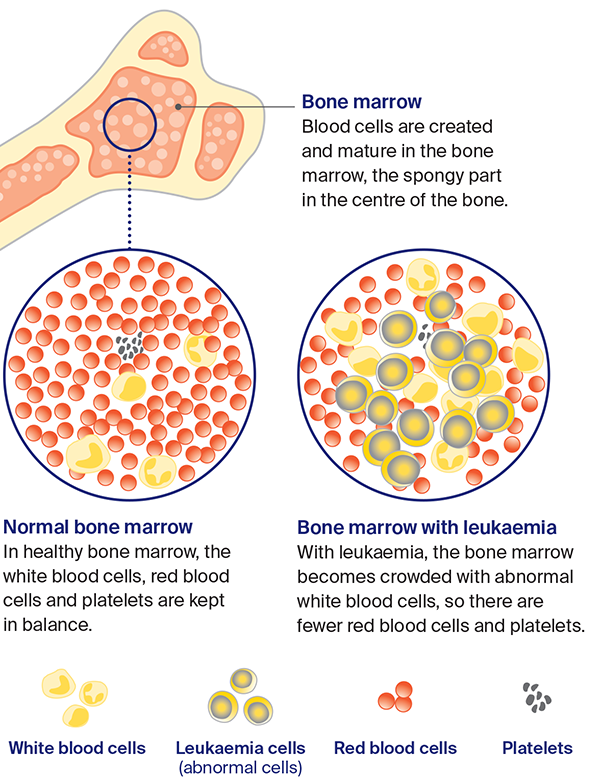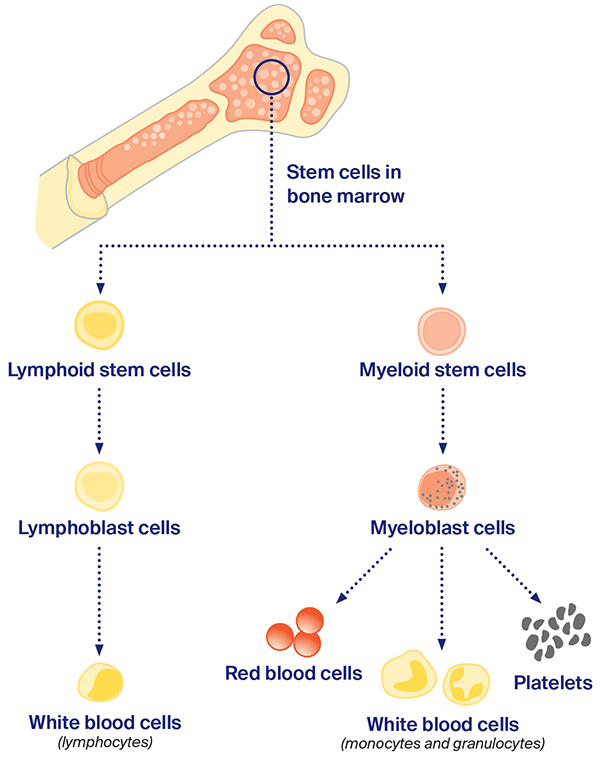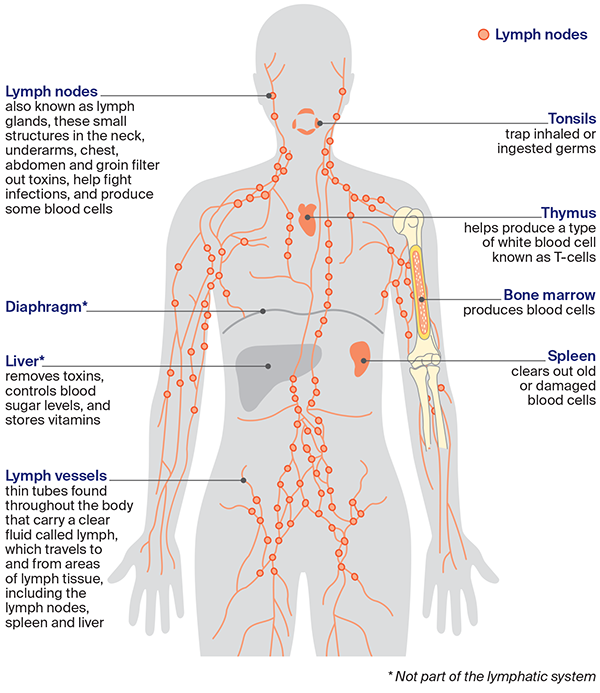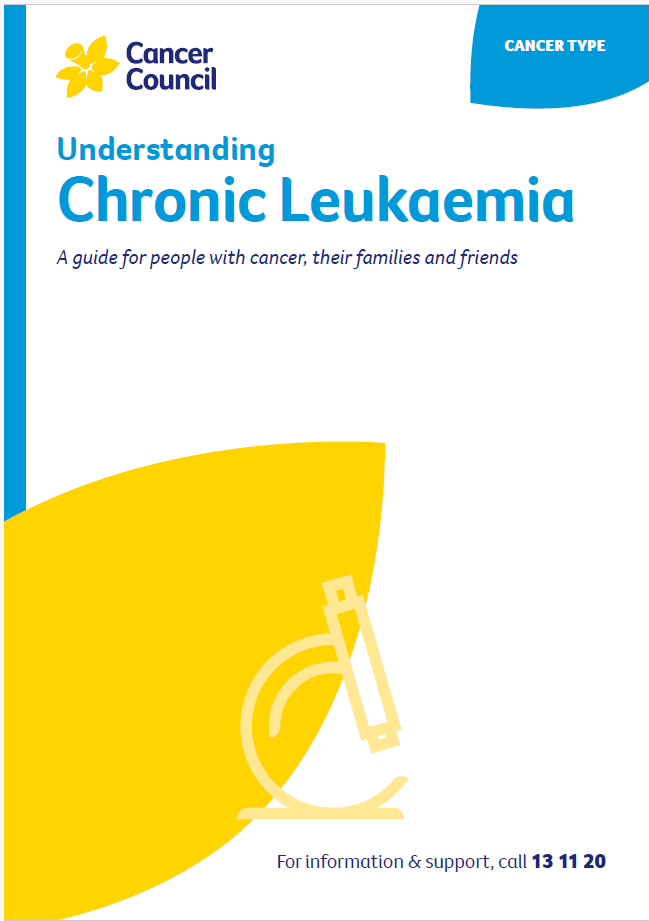- Home
- Chronic lymphocytic leukaemia (CLL)
- About CLL
About chronic lymphocytic leukaemia (CLL)
Below we discuss how chronic lymphocytic leukaemia (CLL) starts, what causes it, who gets it, and more.
Learn more about:
For your community
Overview
Chronic lymphocytic leukaemia (CLL) is a blood cancer that develops when the body makes too many abnormal white blood cells. These abnormal white cells are known as leukaemia cells.
How does leukaemia start?
Because leukaemia cells live too long or multiply too quickly, large numbers of them circulate in the blood. They crowd out normal white blood cells, which then can’t work properly. This increases the risk of infections. As leukaemia progresses, the bone marrow fills with leukaemia cells and there is little room for healthy red blood cells and platelets. This can cause fatigue, dizziness, bleeding problems and bruising.

Is chronic leukaemia different to acute leukaemia?
While all types of leukaemia start in the bone marrow and affect how white blood cells are made, they are grouped in several ways:
- by the type of white blood cell affected
- whether there are abnormalities in the bone marrow
- how quickly the disease develops.
Chronic leukaemia usually makes white cells that are mature or partially developed, occurs gradually, and grows slowly over months to years.
Acute leukaemia makes white cells that are very immature (called blast cells), occurs suddenly, and grows quickly.
Learn more about acute lymphoblastic leukaemia and acute myeloid leukaemia.
What are CLL and CML?
CLL and CML are the two main types of chronic leukaemia. The difference between them is the type of white blood cell affected.
Chronic lymphocytic leukaemia (CLL)
In CLL, the body has too many of the white blood cells known as lymphocytes. The lymphocytes are part of the lymphoid family of blood cells. There are two main types of lymphocytes: B-cell and T-cell. The B lymphocytes are abnormal in people with CLL.
Learn how CLL is diagnosed and treated.
Chronic myeloid leukaemia (CML)
In CML, the body has too many of the white blood cells known as granulocytes. The granulocytes are part of the myeloid family of blood cells.
There are four different kinds of granulocytes: neutrophils, eosinophils, basophils and mast cells. This disease is sometimes called chronic granulocytic leukaemia.
Learn how CML is diagnosed and treated.
Small lymphocytic lymphoma (SLL)
Small lymphocytic lymphoma (SLL) has traditionally been classed as a type of non-Hodgkin lymphoma.
Both SLL and CLL are cancers affecting the lymphocytes. In SLL, abnormal lymphocytes are mainly found in the lymph nodes. In CLL, abnormal lymphocytes are mainly found in the blood, but can be in the lymph nodes and bone marrow.
SLL and CLL are considered the same disease (with different symptoms) and are treated similarly.
Doctors may call small lymphocytic lymphoma CLL/SLL.
The blood
Blood is pumped around your body to provide oxygen and nutrients to your tissues, and to remove waste products. It is made up of blood cells carried in a clear fluid called plasma.
There are three main types of blood cells: white blood cells, red blood cells, and platelets. Each type has a specific job to do.
 | White blood cells – fight infection. |
 | Red blood cells – carry oxygen around the body. |
 | Platelets – help the blood clot. |
All blood cells live for a limited time and need to be continually replaced. Most are made in the bone marrow, which is the spongy part in the centre of bones.
Bone marrow contains blood stem cells. These are unspecialised blood cells that first turn into immature cells known as blast cells. Normally, the blast cells become mature white or red blood cells or platelets. If white blood cells do not mature properly or if there are too many in the blood, it can cause leukaemia.
There are two families of blood stem cells: lymphoid and myeloid. These develop into different types of white blood cells that can be affected by different types of leukaemia.
Blood cell families
Stem cells divide into two families (lymphoid or myeloid), then become immature cells (lymphoblast or myeloblast cells). If cells are normal, they develop into different kinds of mature blood cells.

The lymphatic system
The lymphatic system is part of the immune system, which protects the body against infection.

Who gets CLL?
Each year in Australia, about 5180 people are diagnosed with a form of leukaemia, and more than 2800 of these cases are chronic leukaemia.
CLL is the most common type of chronic leukaemia, with about 2400 people diagnosed each year. It occurs much more often in men than in women and almost never occurs in children.
About 390 people are diagnosed with CML annually. It is slightly more common in men than in women and is rare in children.
What causes CLL?
Chronic leukaemia is caused by changes to one or more of the genes that control how blood cells grow and develop. These changes happen over time, but it is not known why they occur in some people and not others. Exposure to some chemicals or high doses of radiation have been linked to leukaemia, but this doesn’t explain most cases.
Some people have abnormalities in their genes that can lead to CLL. In rare cases, these abnormalities may be inherited from your family, but usually they develop during your life. If you are worried that CLL might run in your family, talk to your doctor, who may refer you to a genetic counsellor.
→ READ MORE: Symptoms of chronic lymphocytic leukaemia (CLL)
Dr Chun Kei Kris Ma, Clinical Haematologist, Western Sydney Local Health District (clinical update); Delphine Eggen, Consumer; Dr Robin Gasiorowski, Staff Specialist, Haematology, Concord Hospital; Karl A Jobburn, Haematology Clinical Nurse Consultant, Liverpool Hospital; Yvonne King, 13 11 20 Consultant, Cancer Council NSW; Heather Mackay, Clinical Nurse Consultant, Westmead Hospital; Jennifer Paton, Consumer.
View the Cancer Council NSW editorial policy.
View all publications or call 13 11 20 for free printed copies.
